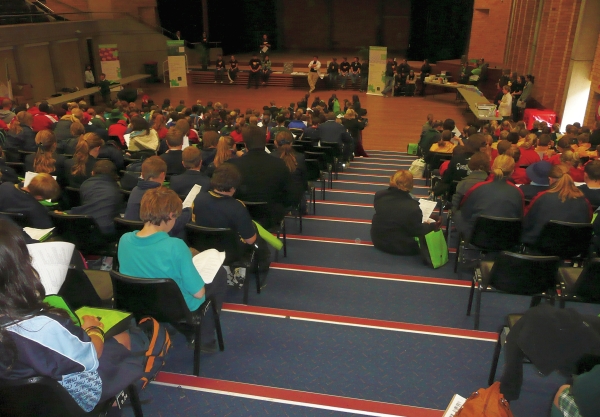“Our National Science Week grant from the Commonwealth Government is enabling more students than ever to experience UNE’s Science in the Bush this year”, said Dr Michelle Taylor of UNE Chemistry. “It’s helped schools travel from places such as Macksville and Inverell, and from many small schools such as those at Bendemeer, Tintinhull, Moonbi, Deepwater and Nowendoc”.
Dr Taylor further explained the concept, “The two day program run at UNE contained a series of hands-on activities designed to help students realise that the study of science – and the pursuit of a scientific career – can involve a lot of fun”. “These events aim to inspire students with the science that surrounds them every day and extend, and support, classroom teaching” said Dr Taylor.
As part of activities on Friday, a group of students got hands-on with chicken eggs under the guidance of Poultry CRC Sub-project leader Associate Professor Julie Roberts. Students were introduced to a number of egg quality parameters and laboratory measurement techniques for egg assessment. The workshop included measurements and observations of egg candling, shell colour, egg weight, shell breaking strength, albumen height and egg yolk colour, egg shell cuticle staining, and introduced students to the Haugh unit (that indicates freshness). Using specialised computer software integrated with the instruments, students were able to calculate Haugh units for their eggs based on egg weight and albumen height.
Eggs under investigation by the students had been stored in either ambient air temperature or under temperature control (refrigerated). Students observed firsthand the reduced albumen height of those stored in ambient air temperature, and were able to measure this accurately with laboratory equipment. Students also stained eggs by submersion for one minute in cuticle blue dye, rinsing and leaving to dry, with resulting staining indicating cuticle coverage (full colour = good cuticle, random colouring = irregular cuticle, damage lines = handling problems, no colour = no cuticle). Throughout the workshop students were engaged and encouraged to ask questions by A/Prof Roberts, building on their existing knowledge base and promoting new understanding of the egg.
With a multitude of activities across the two days at UNE, many students were surprised at the broad scope of scientific career paths. “For the poultry industry in particular, it is important to encourage young school students into thinking about the enormous opportunities that exist in this industry, especially with the backing of a formal education in science” said Professor Mingan Choct, CEO of the Poultry CRC.




